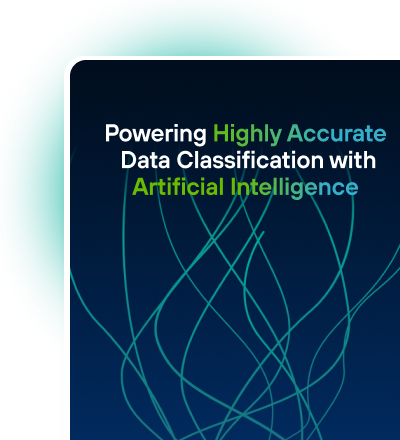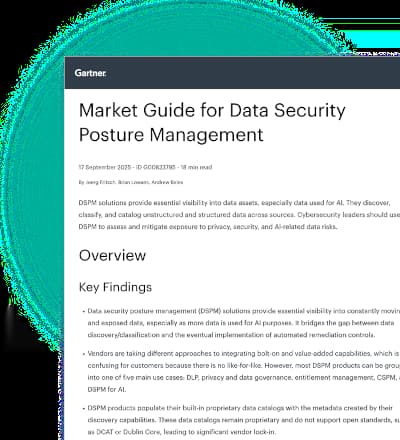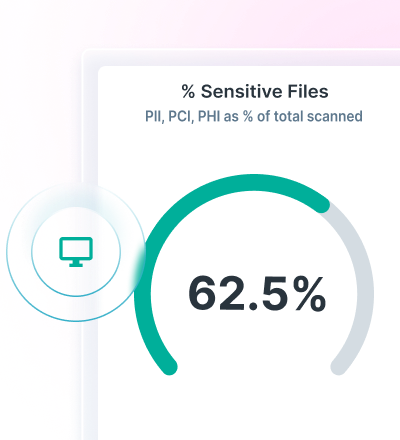
12,000 多名客户不會錯










































獲得對敏感數據的可見性和控制
通過廣泛的數據發現和高度準確的分類,為黑暗數據提供亮點。
Forcepoint DSPM 軟件可掃描任何數據源,並使用專有的 AI 網格技術來識別、分類和修復高風險數據。
如果您的安全團隊在以下方面遇到困難,這是一個完美的解決方案:
大量陰影數據
超量授權的數據
GenAI 數據泄露風險
未識別的數據位置
Forcepoint DSPM Software Leads the Pack
Forcepoint is the only Data Security Posture Management vendor that uses AI Mesh technology to deliver highly accurate data classification. Read the full comparison chart to learn why organizations trust the leading data security provider to discover and catalogue data and remediate risk at scale.
20%
40%
60%
80%
100%
Forcepoint
Traditional Vendor
Data Governance
Vendors
Forcepoint DSPM 解決方案與競爭對手相比
Forcepoint | 傳統廠商 | 資料治理廠商 | |
資料分類
| |||
資料探索
| |||
可擴充性
| |||
分析套件:
| |||
事件分析
| |||
自訂和可擴展性
| |||
基於風險的方法
|
免責聲明:產品比較基於截至 2024 年 5 月 7 日同一廠商提供的產品內功能和跨產品組合整合。比較不包括與第三方廠商的整合。功能比較基於截至 2024 年 5 月 7 日每個廠商的最新和現代版本。 資訊基於截至 2024 年 5 月 7 日從公共網站和論壇、分析師論文和產品資料表所收集的資料。
Forcepoint DSPM 為何是頂級安全工具
提高資料可視性
獲得對雲端與內部環境結構化與非結構化資料的完整可見性,追蹤和管理位於任何位置的敏感資料。
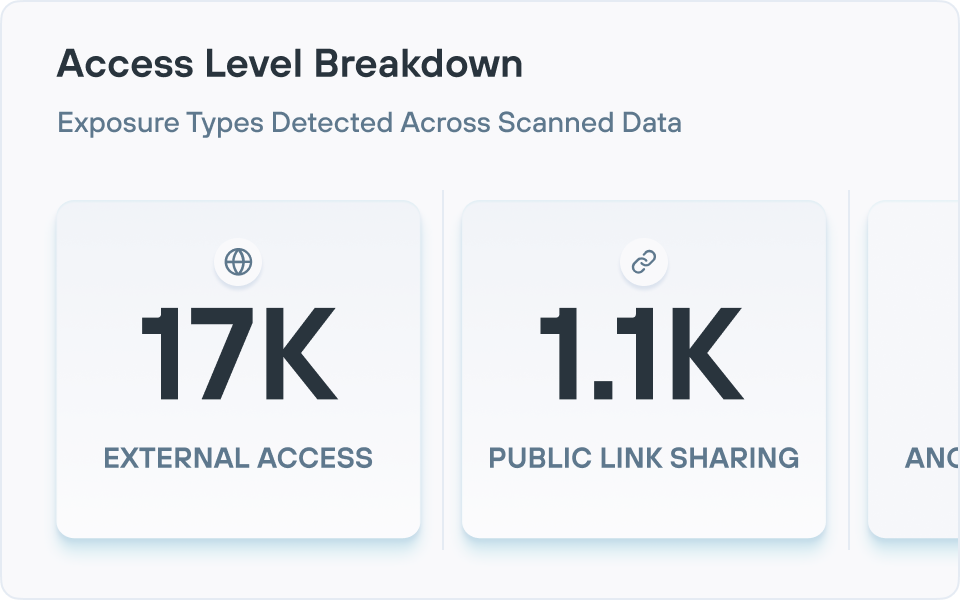
利用 AI 進行發現並分類
利用高度準確的 AI Mesh 技術進行高效、可靠的資料發現和分類,減少誤報並增強事件警報的準確性
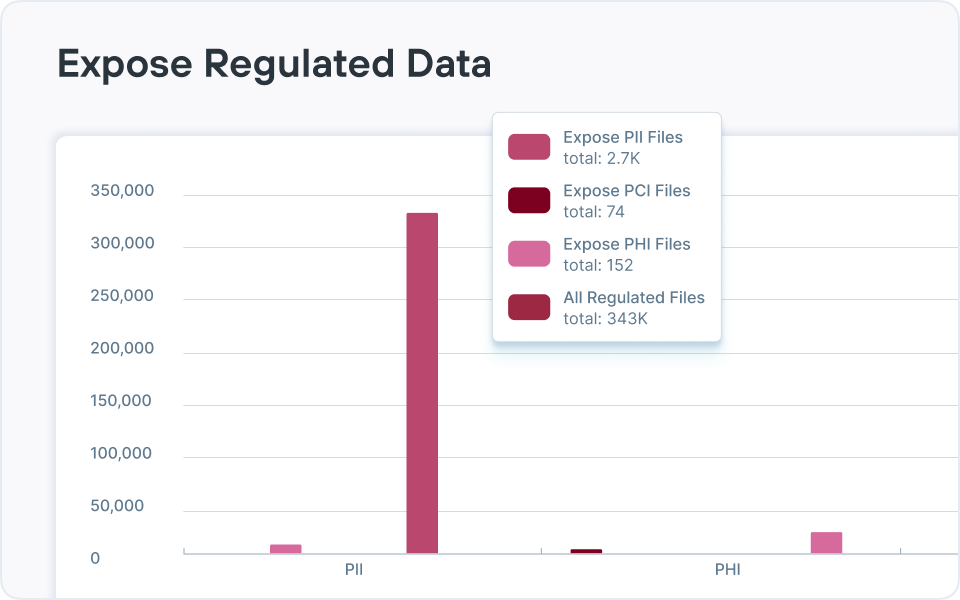
主動補救風險
切實可行的見解可讓您管理權限、移動位置不當的資料並解決資料主權、存取及複製或冗餘、過時和瑣碎資料問題。
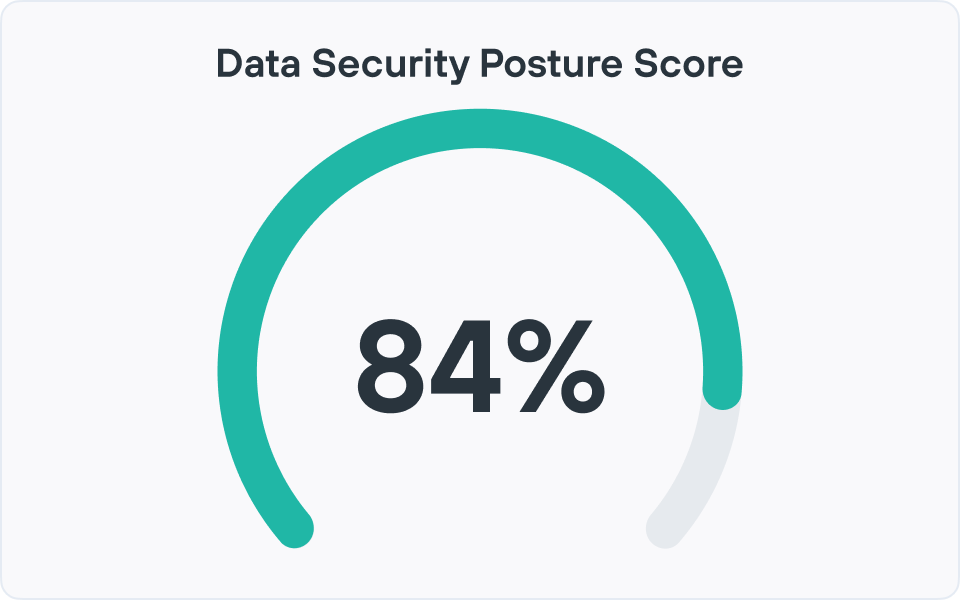
自動化合規性管理
透過自動化簡化合規流程,確保與不斷發展演變的法規保持一致並持續,同時減少手動工作量。
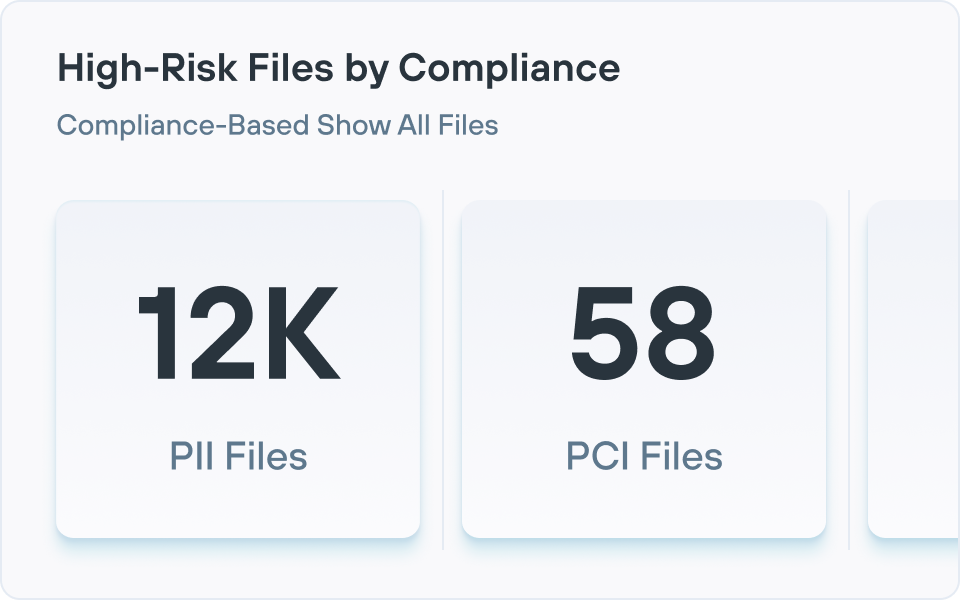


精確度和透明的報告
FBD Insurance 首席技術官 Enda Kyne 表示,DSPM 和 DDR 已受到其 IT 安全和數據保護團隊的歡迎,因為他們能夠控制關鍵數據並向監管機構報告活動。
Strengthen Your Data Security Posture

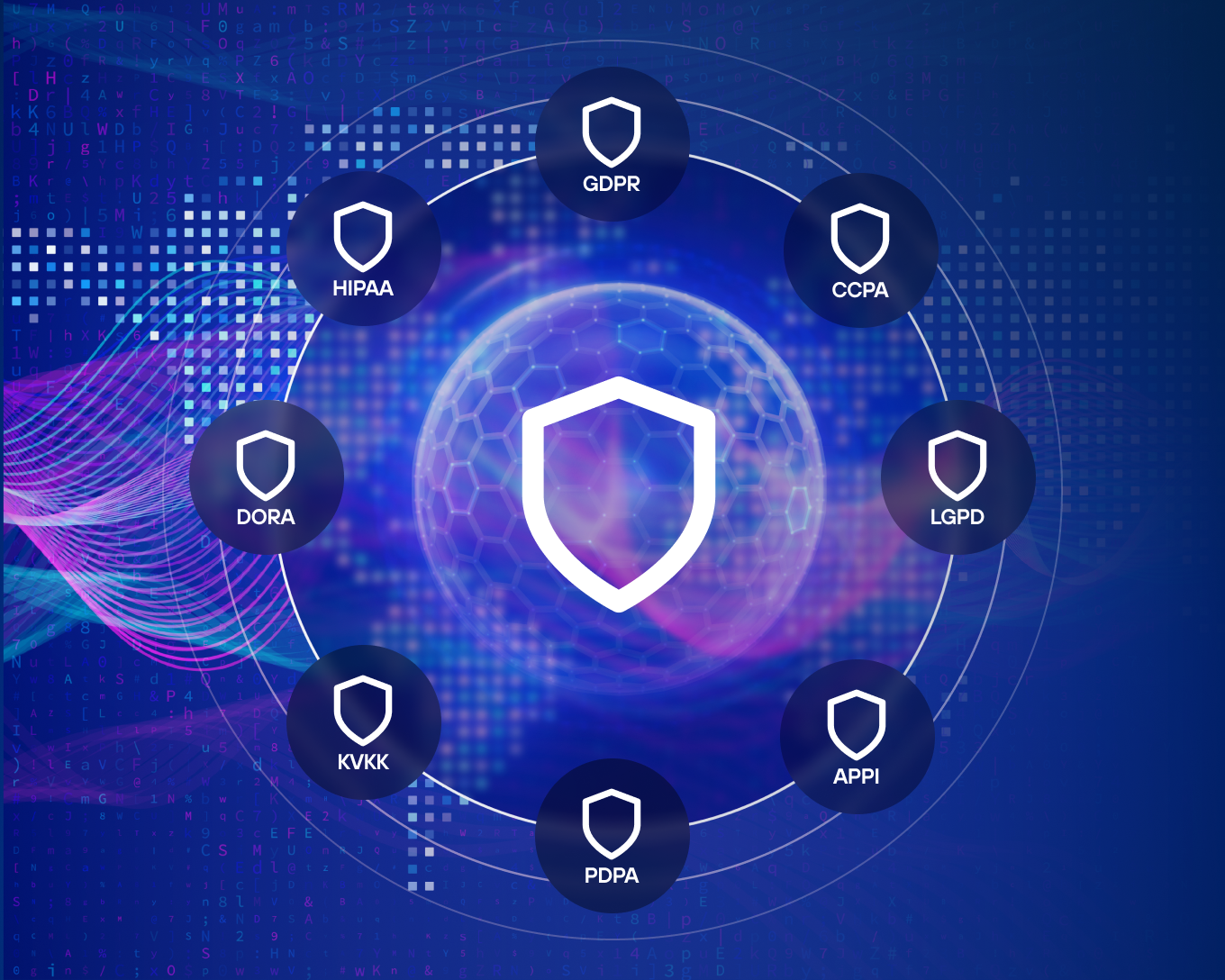
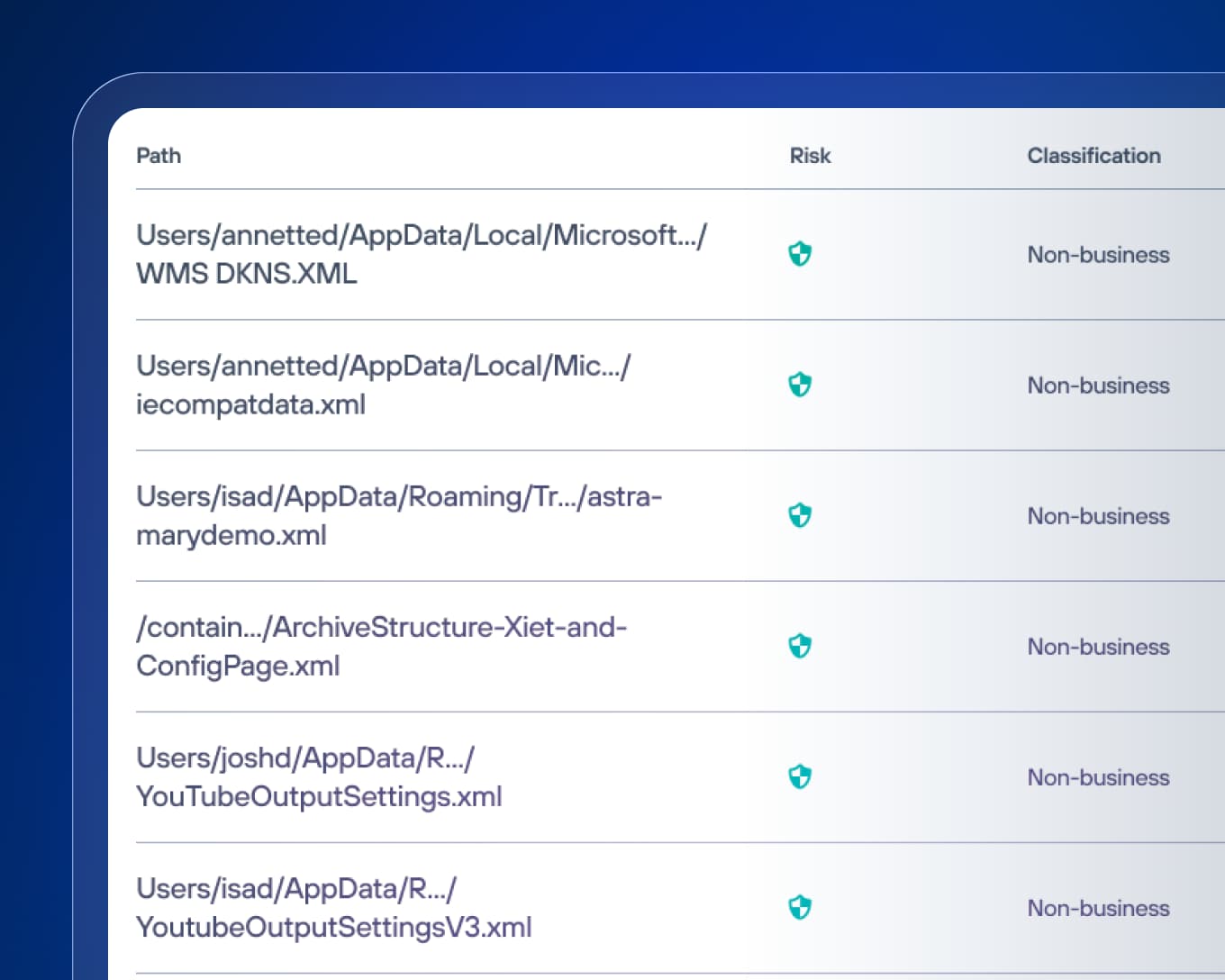

Rapidly and precisely identify sensitive data-at-rest with AI Mesh technology that fine-tunes its classification accuracy relative to your unique organizational needs.

Extend visibility and control over all your regulated data, eliminate gaps and generate automated reports to demonstrate compliance.

Gain a centralized view of your data and enforce the Principle of Least Privilege across cloud, SaaS and on-prem systems for effective governance.


您的資料是否面臨風險?
資料風險評估可主動發現資料面臨的威脅,無論是未分類的敏感檔案,還是授權過多的使用者。透過 Forcepoint 免費獲取資料風險評估,瞭解資料安全與保護管理 (DSPM) 的實際運作情況,並瞭解資您料有多安全。

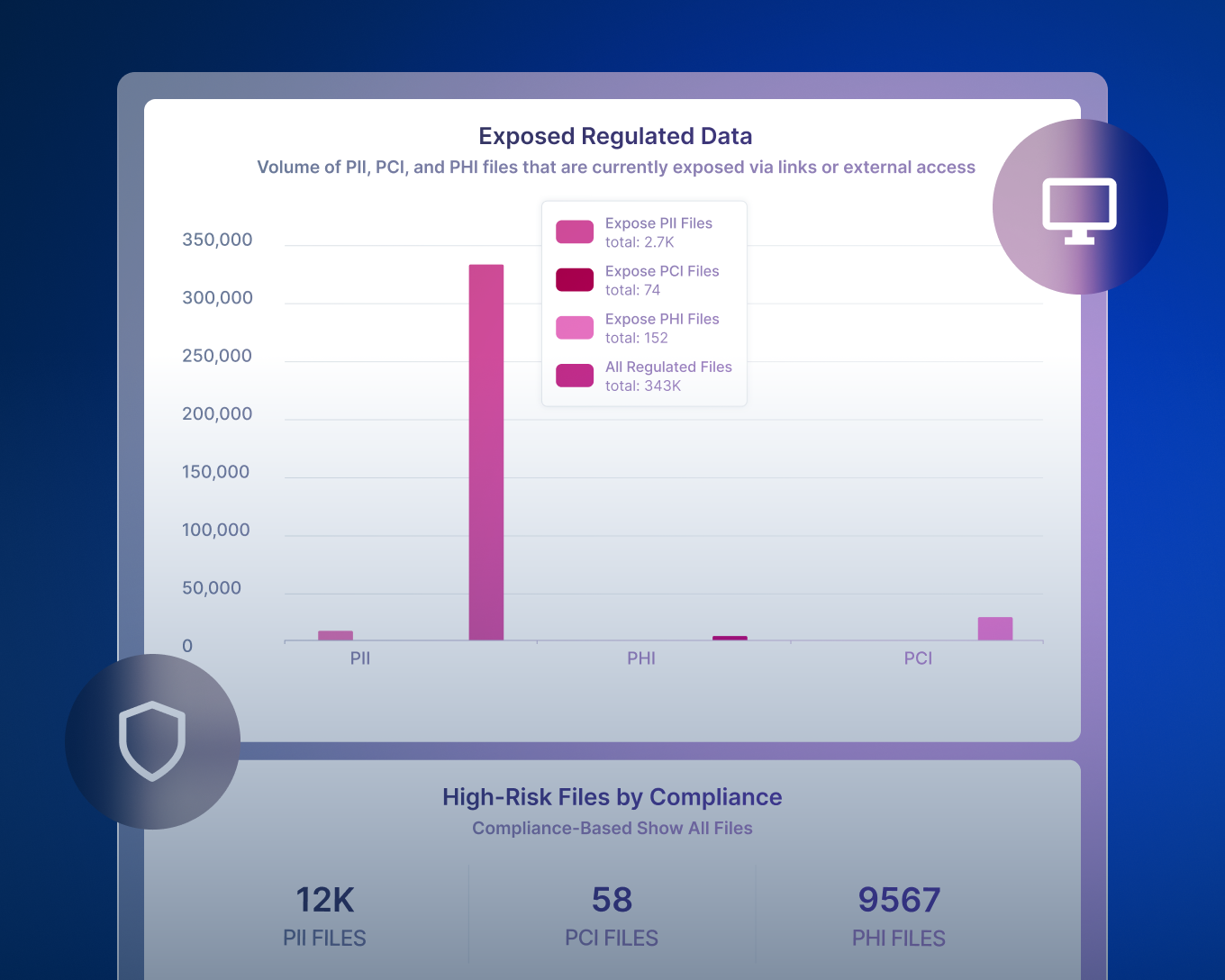


能夠整合 DLP、DSPM 與 DDR,以進行資料發現、分類、保護與補救。

提供有效的風險報告,讓您查看 ROT(冗餘、過時、瑣碎)資料、過度允許的資料、資料主權問題,以及許多使整體資料態勢面臨風險的其他問題。

為所有 GenAI 應用程式提供可見性和控制權。 它還能夠確保 Copilot 與 ChatGPT Enterprise 的使用。
我們的客户案例
我們的客户案例
"As part of Forcepoint’s broader data security ecosystem, DSPM has integrated seamlessly with our existing solutions. It’s an essential component of our overall data security strategy."
Indonesia Financial Group (IFG)
分析師推薦使用。
廣受使用者認可。
使用者及業界分析師始終將 Forcepoint 評為頂尖的資料遺失防護軟體及資料安全軟體供應商。
Forcepoint 在《IDC MarketScape: Worldwide DLP 2025 Vendor Assessment》中被評斷為業界領導者。
Forcepoint 於 2024 年連續第二年獲市調研究公司 Frost & Sullivan 評為 「全球年度最佳 DLP 公司 」
Forcepoint 在 2025 年第一季的 The Forrester Wave™: Data Security Platforms 中獲評為 強勁表現者。
常見問題集
什麼是數據安全態勢管理 (DSPM)?
資料安全態勢管理是一種安全解決方案,可持續發現敏感資料的所在位置、分類方式,以及誰可以在雲端、SaaS 與內部部署環境中存取資料。 Forcepoint 的人工智慧原生 DSPM 遵循相同的模式:持續清點結構化和非結構化資料,使用 AI Mesh 技術在檔案儲存、雲應用程式與內部部署位置準確分類資料,並透過各種透鏡評估任何資料是否面臨風險。
Forcepoint DSPM 通過將定期稽核的態勢轉變為資料風險的實時運行的視圖,幫助提高生產力、削減成本、降低風險並簡化合規。
DSPM 解決方案如何工作?
大多數 DSPM 平台遵循循環的生命週期:探索資料(跨多個雲端與內部部署的結構化和非結構化)、根據敏感度與業務情境對其進行分類、評估風險並排定優先順序(例如過度的特權存取或位置不當的資料)、補救配置錯誤或不安全存取,然後持續監控,保持最新態勢。 Forcepoint DSPM 利用 AI Mesh 實現這一點。
AI Mesh 是一種使用小型語言模型和深度神經網路的人工智慧分類架構。 Forcepoint DSPM 將掃描整合的資料來源,識別高風險資料並進行分類,並建議後續補救步驟,以便團隊能夠調整權限、移動位置不當的資料、清理冗餘、過時或瑣碎 (ROT) 的資料,並修復主權問題,而不是止步於報告。 最近的更新將 Forcepoint DSPM 從檔案擴展到企業資料庫與資料湖,因此,相同的發現、分類與自適應執行模式,現在與 Forcepoint DDR 和 DLP 一起,在單一統一平台中涵蓋結構化和非結構化資料。
DSPM 軟件的數據發現功能是如何工作的?
DSPM 不斷髮掘雲端、網路和內部部署儲存中的資料,以發現組織擁有的每一條資料並加以編目。 找到敏感數據是保護數據的關鍵第一步。 DSPM 解決方案可掃描您的整個數據生態系統,例如:
- 雲平台(AWS、Azure、GCP)
- SaaS 應用程序(Microsoft 365、Salesforce)
- 本地存儲和數據庫
現代 DSPM 軟件通過內置功能或解決方案集成在數據移動和更改時保持持續的可視性。
DSPM 解決方案提供哪些數據分類和風險評估功能?
成熟的 DSPM 解決方案提供一系列的功能:
- 資料探索與人工智能驅動的分類:自動掃描雲端、SaaS、端點與內部部署商店,利用微調的人工智慧,根據敏感度與業務目的準確分類結構化和非結構化資料,並利用可調的模型,減少誤報。
- 資料風險評估加上風險分析和優先排序:建立敏感資料清單,然後根據暴露程度、過度允許的存取和業務影響對風險進行評分,讓團隊首先專注於最關鍵的資料集;Forcepoint 利用風險評分和財務影響評估,優先考慮緩解風險。
- 存取治理:凸顯誰有權存取哪些資料,突出顯示公共或外部共享、非活動帳戶與過度共享的資料夾,並透過目錄整合,深入瞭解權限。
- 合規與報告:生成儀表板、審計追蹤和與框架一致的報告(適用於 GDPR 或 HIPAA 等法規),映射受監管的資料、文件控制並簡化審計;Forcepoint 增加了政策模板、自動化報告和可解釋的人工智能分類,以簡化混合環境的合規性示範。
DSPM平台如何幫助組織管理和補救風險?
發現問題而不加以解決幾乎沒有價值。 現代 DSPM 平台通過可定製的控制措施彌補了這一差距,這些控制措施可以適應您組織的獨特需求和挑戰。 這些控制措施包括權限管理以實現最小權限原則 (PoLP),確保用户只能訪問其任務所需的文件,並解決過多許可或可公開訪問的數據問題。 其他功能包括數據映射以正確分類敏感信息、數據修復以解決存儲在不合適的存儲庫中的文件以及數據歸檔/刪除工作流程以管理超過保留期或被歸類為ROT(冗餘、過時、瑣碎)的有風險文件。
報告和分析在 DSPM 軟件中是如何工作的?
DSPM 解決方案包括報告和分析工具,可提供對組織整體數據安全狀態的可視性。 這些報告功能通常具有儀表板,顯示敏感數據在不同環境中存在的位置,突出顯示特定的風險因素,例如ROT(冗餘、過時、瑣碎)數據、過量許可的文件、錯誤位置的信息和重複的內容。 安全團隊可以使用這些見解來跟蹤一段時間內的指標,並優先考慮修復工作,以使其產生最大影響。
Forcepoint DSPM 是部署在本地還是在雲端?
DSPM 解決方案提供靈活的實施選項:
- 雲原生 SaaS 可實現快速部署
- 適用於敏感環境的混合模型
- 本地用於控制數據主權
- 無代理架構可最大限度地減少開銷
大多數企業從其最重要的數據存儲庫開始,然後逐步擴展覆蓋範圍。
Forcepoint DSPM 如何利用人工智能與自動化?
自動化可實現跨企業環境的連續大規模數據發現和掃描。 現在,企業可以在數據創建、移動或修改時實時自動對其進行分類,從而消除了手動審查中固有的延遲和空白。 人工智能的主要價值在於提供高度準確的數據分類,同時減少誤報。 人工智能提供了所需的精確度,可以自信地區分真正的敏感數據和可能觸發傳統基於規則的系統的良性信息。 為了使 DSPM 解決方案能夠自信地整合這些功能,現代解決方案必須處理從 PDF 到視頻等各種文件類型,並瞭解更廣泛的數據字段陣列,以便分配正確的分類並根據合規性要求進行調整。 這包括利用 GenAI 功能、深度神經網絡分類器和其他預測性 AI 技術協同工作。
組織可以從實施DSPM平台中獲得哪些關鍵好處?
數據安全態勢管理的優勢可以歸結為四個結果:
- 提高生產力
- 降低成本
- 降低風險
- 簡化合規性
DSPM 是否與其他安全技術集成?
DSPM很少孤立地運行。 大多數組織將其與互補的安全技術集成在一起,以創建全面的數據保護策略。 DSPM 軟件提供的有關數據位置、敏感性和風險的見解自然會增強其他安全工具的能力,例如:
- Data Detection and Response (DDR)
- Data Loss Prevention (DLP)
- Cloud Access Security Broker (CASB)
- Identity and Access Management (IAM)
- Cloud Security Posture Management (CSPM)
DSPM 與傳統數據分類工具有何不同?
與使用預定義規則處理已知數據存儲庫的傳統工具不同,DSPM 不斷髮現跨環境的已知和未知數據,利用 AI 進行更準確的分類,並提供有關訪問模式和安全控制的上下文信息。
DSPM 如何幫助評估安全態勢?
資料安全態勢管理 (DSPM) 通過持續發現敏感資料的所在位置(雲端、SaaS、內部部署)、根據敏感度對其進行分類,並映射出有權存取資料的人員,來評估安全態勢。
Forcepoint DSPM 使用其人工智慧網格引擎與廣泛的連接器,清點結構化和非結構化資料。 它突顯過度暴露的文件、ROT 資料與風險權限,並將它們關聯到資料風險評估。
然後,它提供高效能的監控與分析,顯示有多少敏感資料面臨風險、哪些位置與業務單位導致的風險最大,以及隨時間推移的變化如何影響整體資料風險。 這些見解透過詳細的儀表板與報告呈現,讓安全和合規團隊獲得資料安全態勢的最新、可衡量的視圖,而非進行時間點審計。
SSPM 與 CSPM 與 DSPM 的區別是什麼?
CSPM(雲端安全態勢管理)側重於雲端基礎架構:配置、網路控制、身份和平台服務。 它尋找並幫助修復 IaaS、PaaS 與 SaaS 環境中的錯誤配置,而不是資料本身的內容。
SSPM (SaaS 安全態勢管理) 側重於 SaaS 應用程式:Microsoft 365、Salesforce 等服務的安全設定、存取與整合。
DSPM(資料安全態勢管理)特別關注資料,即發現、分類與評估敏感資訊的風險。 它回答了「我們擁有哪些資料、資料位於何處、誰可以存取資料,以及暴露的風險有多大?」
Forcepoint DSPM 是否具有即時監控與風險偵測功能?
是。 Forcepoint DSPM 在掃描時提供即時或高頻風險評估,利用暴露級別更新儀表板,並利用進階警報系統自動標記異常與潛在的入侵。
DSPM 如何增強雲端安全?
DSPM 通過讓雲端儲存、SaaS 平台與資料庫儲存的敏感資料獲得完全可見性,增強雲端安全。 它準確顯示存在哪些資料、敏感程度、位於何處以及如何共享。
Forcepoint DSPM 掃描主要雲端供應商與身份來源,揭露過度暴露的資料、過多的權限,以及傳統雲端工具遺漏的錯位敏感內容。
在此背景下,安全團隊可以在雲端實施最小權限存取,根據實際業務與法規影響排定補救的優先順序,並將 DSPM 發現與 DLP 和其他控制措施相整合。
在雲端安全使用 DSPM 有哪些好處?
在雲端環境使用 DSPM 可帶來切實的成果:減少資料暴露(透過過度暴露偵測與權限清理)、減少多雲端與 SaaS 的盲點,以及為 IP 與受管制的資料提供更好的保護。
Forcepoint AI Mesh 提高了 Forcepoint DSPM 的分類準確性,直接減少誤報,幫助團隊專注於真實風險。
它還透過自動化、整合式儀表板與報告,提高營運效率。 它通過解決 ROT 資料縮短調查與補救週期,降低儲存與治理成本,並解決審計與資料保護法規的合規性準備問題。
DSPM 是否有助於身份威脅檢測與響應?
DSPM 不是身份威脅檢測與響應 (ITDR) 平台,但 Forcepoint DSPM 確實能偵測與資料相關的身份風險。 它繪製出哪些使用者與群組可以存取敏感檔案的地圖,突出顯示過度授權或影響大的「風險使用者」,並透過分析和警示揭露可疑的存取模式。
這些見解讓安全團隊能夠快速調查潛在的身份濫用(例如,擁有過度存取關鍵資料的使用者),並採取有針對性的行動,例如在現有安全工具中撤銷存取權限、加強共享或觸發工作流程,以加強以身份為中心的資料保護,無需猜測。
DSPM 如何偵測與評估敏感資料暴露?
Forcepoint DSPM 使用連接器大規模掃描雲端與本地資料儲存,然後應用人工智慧網格分類和可配置的偵測器,根據內容與情境識別敏感資料(PII、PCI、PHI、IP 等)。
然後,它通過分析共享設定與權限,來評估暴露,標記公共、外部共享、內部過度共享、位置不當或與風險使用者相關的資料,並在儀表板與報告中量化風險,以便團隊確定補救的優先順序。
DSPM 如何簡化合規報告?
Forcepoint DSPM 通過持續記錄受監管的資料的所在位置、保護方式以及誰可以存取資料,集中化 GDPR、HIPAA 及其他隱私與主權要求等法規所需的證據。 其報告功能與分析套件,顯示流行框架的合規就緒情況與資料風險。
適用於合規團隊的 Forcepoint DSPM 包括哪些儀表板?
Forcepoint DSPM 分析套件包括預定義的儀表板,例如過度暴露分析、勒索軟體暴露分析、關鍵資料重複、風險使用者偵測、資料保留、位置不當的資料、資料風險評估,以及針對資料控制違規的事件追蹤。
合規團隊還可以使用由 DSPM 的查詢語言驅動的內建小工具(計數器、圖表、表格、事件視圖等)創建自訂儀表板,並將這些視圖導出為報告,讓他們能夠針對特定法規、業務單位或資料類別量身定製監督,無需自訂開發。





